Alcoa (AA) has appreciated 13% so far this year, despite not so impressive quarterly results. But the conditions in the aluminum industry look bright, which is why Alcoa can continue doing well despite headwinds in the short run. In this article, we will take a closer look at Alcoa's prospects and see why it is a solid long-term investment.
Positive industry trends
Alcoa has managed to reposition its value-added business that makes up approximately 57% of its total revenue and derives nearly 80% of the segment profits as it has reduced its cost base drastically. Besides, the company is expected to improve its margins significantly as demand for both sheet and brazing sheet for heat exchangers is rising, and a lower cost model will certainly become accretive for the company. Moreover, the company will also benefit from improving economies in the U.S and Europe that will drive its industrial volume.
In addition, global aluminum demand is estimated to grow at 7% this year. Demand in China is expected to grow at a healthy rate of 10%, which is slightly lower than 12% in 2013. In the rest of the world, North American demand has been estimated to grow at 5%, fueled by increased automotive consumption.
Meanwhile, aluminum demand in Europe is expected to grow this year. Also, aluminum demand in emerging countries like Brazil, Russia, and India is quite strong, as it is growing at a reasonable rate of 6%, 5%, and 7%, respectively. Brazil, in particular, is showing good prospects with construction for the 2016 Olympics and this year's FIFA World Cup.
Apart from this, the company is also expected to benefit from the new capacity that has been brought online. Its Worsley and Yarwun refinery expansions should compliment its sales along with its recently launched online refinery services in Saudi Arabia and accelerated production in India.
Separately, the MENA region and India are lined up for new expansion of 1.4 million metric tons that will add value to its overall production. However, there is substantial amount of execution risk in India due to uncertain coal spot prices that might hurt its sales this year. Also, the aerospace industry, with a projected growth rate of 7% to 8%, will be a key driver for Alcoa this year. Boeing (BA) and Airbus now have a combined backlog of over 10,000 aircrafts, which is about eight years of production. Hence, this backlog means that aluminum demand should remain strong in the long run.
Strong demand ahead
Besides, the company has witnessed a strong demand in the aerospace sector with Boeing receiving the single-largest commercial order of $56 billion for 150 Boeing 777X from Emirates. Also, Airbus landed a deal of $20 billion for 50 A380s, from Emirates should enhance its sales. Alcoa is also expecting demand for cargo to grow at 6% from 5.3% last year.
The picture in the aerospace segment looks quite impressive, with growth being supported by a spur in demand from other segments like a 19.5% increase in regional jets and a 10% increase in business jets. Moreover, demand from the military for Joint Strike Fighter, the F-35, the KC-46 tanker, and the V-22 Osprey is an additional advantage.
Alcoa can also do well in the automotive sector, as demand for passenger cars is increasing. Also, auto sales in the U.S. are expected to grow to 16 million units this year. The existing cars have an average age of 11.4 years, which is well ahead of the historic average of around 9.4 years. This is driving growth in the country, and could lead to higher demand for aluminum used in vehicles.
Also, the commercial building and construction segment is expected to grow strongly in 2014 by around 3% to 4%, backed by a 19% increase in housing starts, and a 11.5% jump in non-residential contracts. All these should help drive its long-term growth.
Conclusion
This impressive outlook suggests that Alcoa is on the right track and the continuous rise in aluminum demand makes it more promising. The increase in auto sales, upswing in construction activity, and the backlog of key aerospace companies could help Alcoa return to growth soon. As such, investors should continue holding Alcoa as its long-term prospects look promising.
| Currently 1.00/512345 Rating: 1.0/5 (1 vote) | Voters: |

Subscribe via Email

Subscribe RSS Comments Please leave your comment:
More GuruFocus Links
| Latest Guru Picks | Value Strategies |
| Warren Buffett Portfolio | Ben Graham Net-Net |
| Real Time Picks | Buffett-Munger Screener |
| Aggregated Portfolio | Undervalued Predictable |
| ETFs, Options | Low P/S Companies |
| Insider Trends | 10-Year Financials |
| 52-Week Lows | Interactive Charts |
| Model Portfolios | DCF Calculator |
RSS Feed  | Monthly Newsletters |
| The All-In-One Screener | Portfolio Tracking Tool |

MORE GURUFOCUS LINKS
| Latest Guru Picks | Value Strategies |
| Warren Buffett Portfolio | Ben Graham Net-Net |
| Real Time Picks | Buffett-Munger Screener |
| Aggregated Portfolio | Undervalued Predictable |
| ETFs, Options | Low P/S Companies |
| Insider Trends | 10-Year Financials |
| 52-Week Lows | Interactive Charts |
| Model Portfolios | DCF Calculator |
RSS Feed  | Monthly Newsletters |
| The All-In-One Screener | Portfolio Tracking Tool |
AA STOCK PRICE CHART

14.43 (1y: +86%) $(function(){var seriesOptions=[],yAxisOptions=[],name='AA',display='';Highcharts.setOptions({global:{useUTC:true}});var d=new Date();$current_day=d.getDay();if($current_day==5||$current_day==0||$current_day==6){day=4;}else{day=7;} seriesOptions[0]={id:name,animation:false,color:'#4572A7',lineWidth:1,name:name.toUpperCase()+' stock price',threshold:null,data:[[1372222800000,7.75],[1372309200000,7.87],[1372395600000,7.82],[1372654800000,7.86],[1372741200000,7.8],[1372827600000,7.71],[1373000400000,7.81],[1373259600000,7.92],[1373346000000,7.91],[1373432400000,7.92],[1373518800000,8.1],[1373605200000,8.1],[1373864400000,8.17],[1373950800000,8.11],[1374037200000,8.19],[1374123600000,8.21],[1374210000000,8.07],[1374469200000,8.12],[1374555600000,8.14],[1374642000000,8.05],[1374728400000,8.03],[1374814800000,8.07],[1375074000000,8.04],[1375160400000,8.03],[1375246800000,7.95],[1375333200000,7.95],[1375419600000,7.97],[1375678800000,8],[1375765200000,7.91],[1375851600000,7.79],[1375938000000,7.91],[1376024400000,8.22],[1376283600000,8.26],[1376370000000,8.15],[1376456400000,8.16],[1376542800000,8.16],[1376629200000,8.12],[1376888400000,7.94],[1376974800000,8],[1377061200000,7.84],[1377147600000,8.03],[1377234000000,8.05],[1377493200000,8.06],[1377579600000,7.915],[1377666000000,7.93],[1377752400000,7.81],[1377838800000,7.7],[1378184400000,7.72],[1378270800000,7.84],[1378357200000,7.87],[1378443600000,7.92],[1378702800000,8.08],[1378789200000,8.055],[1378875600000,8.19],[1378962000000,8.16],[1379048400000,8.08],[1379307600000,8.1],[1379394000000,8.26],[1379480400000,8.555],[1379566800000,8.44],[1379653200000,8.29],[1379912400000,8.28],[1379998800000,8.3],[1380085200000,8.33],[1380171600000,8.27],[1380258000000,8.2],[1380517200000,8.12],[1380603600000,8.17],[1380690000000,8.02],[1380776400000,7.86],[1380862800000,7.96],[1381122000000,7.97],[1381208400000,7.94],[1381294800000,8.1],[1381381200000,8.35],[1381467600000,8.32],[1381726800000,8.45],[1381813200000,8.38],[1381899600000,8.53],[1381986000000,8.59],[1382072400000,8.63],[1382331600000,8.6],[1382418000000,9.36],[1382504400000,9.27],[1382590800000,9.25],[1382677200000,9.24],[1382936400000,9.56],[1383022800000,9.54],[1383109200000,9.46],[1383195600000,9.27],[1383282000000,9.27],[138354480! 0000,9.92],[1383631200000,9.78],[1383717600000,9.66],[1383804000000,8.95],[1383890400000,9.06],[1384149600000,9.03],[1384236000000,8.92],[1384322400000,8.99],[1384408800000,8.98],[1384495200000,9.03],[1384754400000,8.95],[1384840800000,9.13],[1384927200000,9.05],[1385013600000,9.12],[1385100000000,9.24],[1385359200000,9.59],[1385445600000,9.65],[1385532000000,9.64],[1385704800000,9.61],[1385964000000,9.55],[1386050400000,9.42],[1386136800000,9.36],[1386223200000,9.35],[1386309600000,9.36],[1386568800000,9.48],[1386655200000,9.56],[1386741600000,9.34],[1386828000000,9.37],[1386914400000,9.51],[1387173600000,9.57],[1387260000000,9.7],[1387346400000,9.83],[1387432800000,9.97],[1387519200000,9.94],[1387778400000,10.13],[1387864800000,10.36],[1388037600000,10.43],[1388124000000,10.69],[1388383200000,10.53],[1388469600000,10.63],[1388642400000,1

 Popular Posts: Hottest Energy Stocks Now – TPLM HK KOG SD10 Oil and Gas Stocks to Buy Now10 Best “Strong Buy” Stocks — BITA SHPG TRGP and more Recent Posts: Biggest Movers in Technology Stocks Now – TTEC SATS MR PLT Biggest Movers in Services Stocks Now – AMX SSP HHC PAG Hottest Financial Stocks Now – TFSL KCG FSC BLX View All Posts 6 Internet and Web Service Stocks to Buy Now
Popular Posts: Hottest Energy Stocks Now – TPLM HK KOG SD10 Oil and Gas Stocks to Buy Now10 Best “Strong Buy” Stocks — BITA SHPG TRGP and more Recent Posts: Biggest Movers in Technology Stocks Now – TTEC SATS MR PLT Biggest Movers in Services Stocks Now – AMX SSP HHC PAG Hottest Financial Stocks Now – TFSL KCG FSC BLX View All Posts 6 Internet and Web Service Stocks to Buy Now  Agence France-Presse/Getty Images
Agence France-Presse/Getty Images 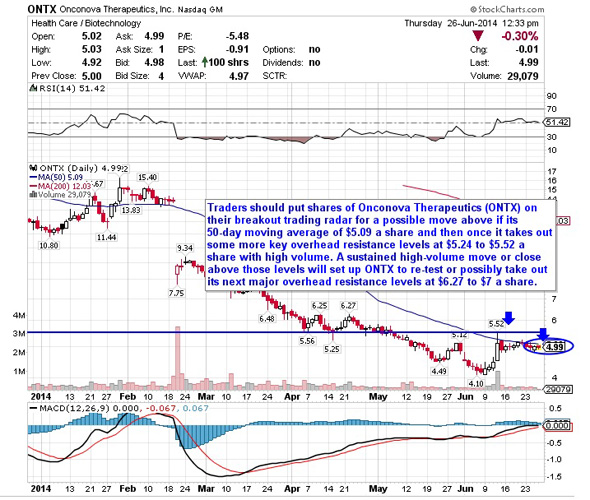
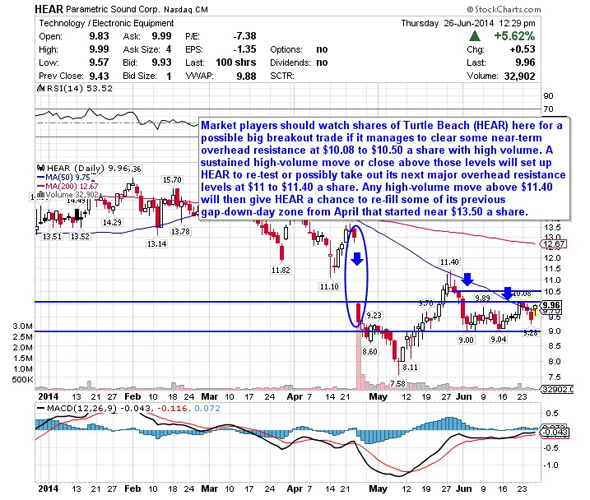
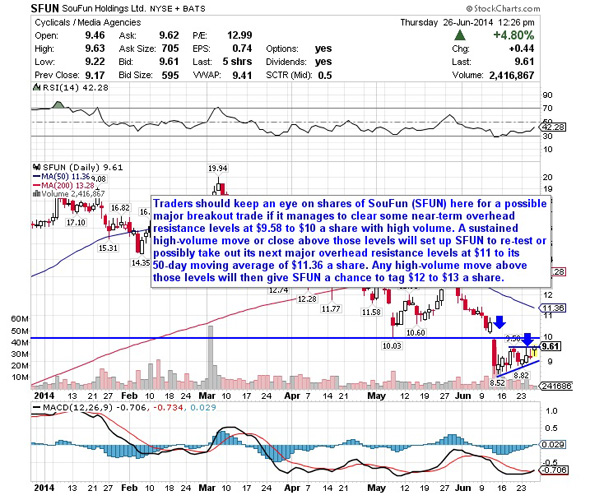
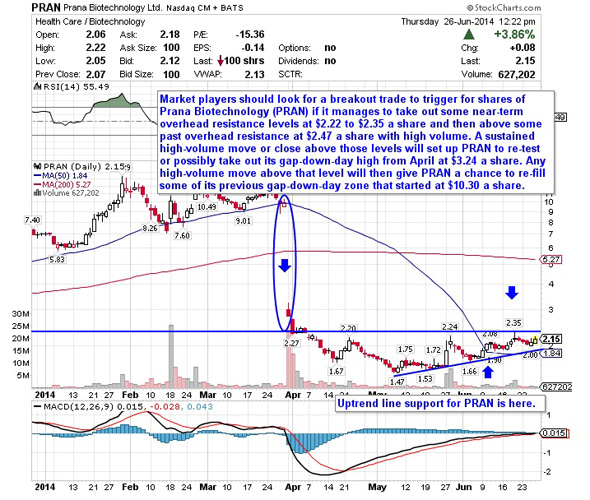
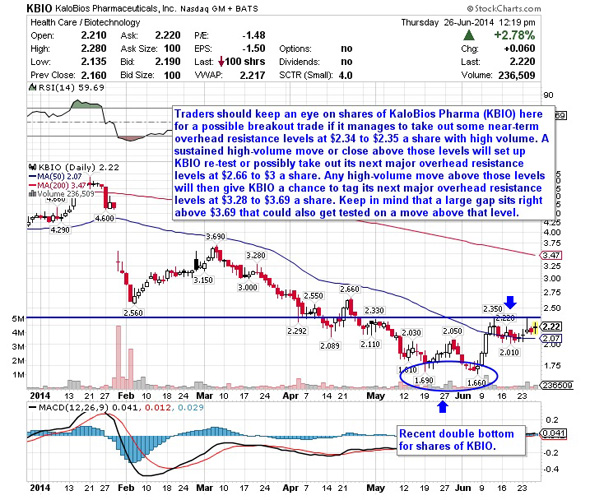
 The Washington Post/Getty Images
The Washington Post/Getty Images 


 Popular Posts: Don't Tread on Me – 3 Great All-American Dividend Stocks to BuyDov Charney’s Out, American Apparel Rallies … and APP Stock’s Still a Bad JokeThe Top 10 S&P 500 Dividend Stocks for March Recent Posts: 5 Stocks to Sell for July Chinese Stocks: Is a Tipping Point Coming Soon? 5 Reasons to Buy Japanese Stocks – EWJ View All Posts 5 Stocks to Sell for July
Popular Posts: Don't Tread on Me – 3 Great All-American Dividend Stocks to BuyDov Charney’s Out, American Apparel Rallies … and APP Stock’s Still a Bad JokeThe Top 10 S&P 500 Dividend Stocks for March Recent Posts: 5 Stocks to Sell for July Chinese Stocks: Is a Tipping Point Coming Soon? 5 Reasons to Buy Japanese Stocks – EWJ View All Posts 5 Stocks to Sell for July  The good news is that although the market looks to have hit some resistance after setting more record highs, historical returns suggest additional all-time highs are on the horizon.
The good news is that although the market looks to have hit some resistance after setting more record highs, historical returns suggest additional all-time highs are on the horizon.





 MORE GURUFOCUS LINKS
MORE GURUFOCUS LINKS  14.43 (1y: +86%) $(function(){var seriesOptions=[],yAxisOptions=[],name='AA',display='';Highcharts.setOptions({global:{useUTC:true}});var d=new Date();$current_day=d.getDay();if($current_day==5||$current_day==0||$current_day==6){day=4;}else{day=7;} seriesOptions[0]={id:name,animation:false,color:'#4572A7',lineWidth:1,name:name.toUpperCase()+' stock price',threshold:null,data:[[1372222800000,7.75],[1372309200000,7.87],[1372395600000,7.82],[1372654800000,7.86],[1372741200000,7.8],[1372827600000,7.71],[1373000400000,7.81],[1373259600000,7.92],[1373346000000,7.91],[1373432400000,7.92],[1373518800000,8.1],[1373605200000,8.1],[1373864400000,8.17],[1373950800000,8.11],[1374037200000,8.19],[1374123600000,8.21],[1374210000000,8.07],[1374469200000,8.12],[1374555600000,8.14],[1374642000000,8.05],[1374728400000,8.03],[1374814800000,8.07],[1375074000000,8.04],[1375160400000,8.03],[1375246800000,7.95],[1375333200000,7.95],[1375419600000,7.97],[1375678800000,8],[1375765200000,7.91],[1375851600000,7.79],[1375938000000,7.91],[1376024400000,8.22],[1376283600000,8.26],[1376370000000,8.15],[1376456400000,8.16],[1376542800000,8.16],[1376629200000,8.12],[1376888400000,7.94],[1376974800000,8],[1377061200000,7.84],[1377147600000,8.03],[1377234000000,8.05],[1377493200000,8.06],[1377579600000,7.915],[1377666000000,7.93],[1377752400000,7.81],[1377838800000,7.7],[1378184400000,7.72],[1378270800000,7.84],[1378357200000,7.87],[1378443600000,7.92],[1378702800000,8.08],[1378789200000,8.055],[1378875600000,8.19],[1378962000000,8.16],[1379048400000,8.08],[1379307600000,8.1],[1379394000000,8.26],[1379480400000,8.555],[1379566800000,8.44],[1379653200000,8.29],[1379912400000,8.28],[1379998800000,8.3],[1380085200000,8.33],[1380171600000,8.27],[1380258000000,8.2],[1380517200000,8.12],[1380603600000,8.17],[1380690000000,8.02],[1380776400000,7.86],[1380862800000,7.96],[1381122000000,7.97],[1381208400000,7.94],[1381294800000,8.1],[1381381200000,8.35],[1381467600000,8.32],[1381726800000,8.45],[1381813200000,8.38],[1381899600000,8.53],[1381986000000,8.59],[1382072400000,8.63],[1382331600000,8.6],[1382418000000,9.36],[1382504400000,9.27],[1382590800000,9.25],[1382677200000,9.24],[1382936400000,9.56],[1383022800000,9.54],[1383109200000,9.46],[1383195600000,9.27],[1383282000000,9.27],[138354480! 0000,9.92],[1383631200000,9.78],[1383717600000,9.66],[1383804000000,8.95],[1383890400000,9.06],[1384149600000,9.03],[1384236000000,8.92],[1384322400000,8.99],[1384408800000,8.98],[1384495200000,9.03],[1384754400000,8.95],[1384840800000,9.13],[1384927200000,9.05],[1385013600000,9.12],[1385100000000,9.24],[1385359200000,9.59],[1385445600000,9.65],[1385532000000,9.64],[1385704800000,9.61],[1385964000000,9.55],[1386050400000,9.42],[1386136800000,9.36],[1386223200000,9.35],[1386309600000,9.36],[1386568800000,9.48],[1386655200000,9.56],[1386741600000,9.34],[1386828000000,9.37],[1386914400000,9.51],[1387173600000,9.57],[1387260000000,9.7],[1387346400000,9.83],[1387432800000,9.97],[1387519200000,9.94],[1387778400000,10.13],[1387864800000,10.36],[1388037600000,10.43],[1388124000000,10.69],[1388383200000,10.53],[1388469600000,10.63],[1388642400000,1
14.43 (1y: +86%) $(function(){var seriesOptions=[],yAxisOptions=[],name='AA',display='';Highcharts.setOptions({global:{useUTC:true}});var d=new Date();$current_day=d.getDay();if($current_day==5||$current_day==0||$current_day==6){day=4;}else{day=7;} seriesOptions[0]={id:name,animation:false,color:'#4572A7',lineWidth:1,name:name.toUpperCase()+' stock price',threshold:null,data:[[1372222800000,7.75],[1372309200000,7.87],[1372395600000,7.82],[1372654800000,7.86],[1372741200000,7.8],[1372827600000,7.71],[1373000400000,7.81],[1373259600000,7.92],[1373346000000,7.91],[1373432400000,7.92],[1373518800000,8.1],[1373605200000,8.1],[1373864400000,8.17],[1373950800000,8.11],[1374037200000,8.19],[1374123600000,8.21],[1374210000000,8.07],[1374469200000,8.12],[1374555600000,8.14],[1374642000000,8.05],[1374728400000,8.03],[1374814800000,8.07],[1375074000000,8.04],[1375160400000,8.03],[1375246800000,7.95],[1375333200000,7.95],[1375419600000,7.97],[1375678800000,8],[1375765200000,7.91],[1375851600000,7.79],[1375938000000,7.91],[1376024400000,8.22],[1376283600000,8.26],[1376370000000,8.15],[1376456400000,8.16],[1376542800000,8.16],[1376629200000,8.12],[1376888400000,7.94],[1376974800000,8],[1377061200000,7.84],[1377147600000,8.03],[1377234000000,8.05],[1377493200000,8.06],[1377579600000,7.915],[1377666000000,7.93],[1377752400000,7.81],[1377838800000,7.7],[1378184400000,7.72],[1378270800000,7.84],[1378357200000,7.87],[1378443600000,7.92],[1378702800000,8.08],[1378789200000,8.055],[1378875600000,8.19],[1378962000000,8.16],[1379048400000,8.08],[1379307600000,8.1],[1379394000000,8.26],[1379480400000,8.555],[1379566800000,8.44],[1379653200000,8.29],[1379912400000,8.28],[1379998800000,8.3],[1380085200000,8.33],[1380171600000,8.27],[1380258000000,8.2],[1380517200000,8.12],[1380603600000,8.17],[1380690000000,8.02],[1380776400000,7.86],[1380862800000,7.96],[1381122000000,7.97],[1381208400000,7.94],[1381294800000,8.1],[1381381200000,8.35],[1381467600000,8.32],[1381726800000,8.45],[1381813200000,8.38],[1381899600000,8.53],[1381986000000,8.59],[1382072400000,8.63],[1382331600000,8.6],[1382418000000,9.36],[1382504400000,9.27],[1382590800000,9.25],[1382677200000,9.24],[1382936400000,9.56],[1383022800000,9.54],[1383109200000,9.46],[1383195600000,9.27],[1383282000000,9.27],[138354480! 0000,9.92],[1383631200000,9.78],[1383717600000,9.66],[1383804000000,8.95],[1383890400000,9.06],[1384149600000,9.03],[1384236000000,8.92],[1384322400000,8.99],[1384408800000,8.98],[1384495200000,9.03],[1384754400000,8.95],[1384840800000,9.13],[1384927200000,9.05],[1385013600000,9.12],[1385100000000,9.24],[1385359200000,9.59],[1385445600000,9.65],[1385532000000,9.64],[1385704800000,9.61],[1385964000000,9.55],[1386050400000,9.42],[1386136800000,9.36],[1386223200000,9.35],[1386309600000,9.36],[1386568800000,9.48],[1386655200000,9.56],[1386741600000,9.34],[1386828000000,9.37],[1386914400000,9.51],[1387173600000,9.57],[1387260000000,9.7],[1387346400000,9.83],[1387432800000,9.97],[1387519200000,9.94],[1387778400000,10.13],[1387864800000,10.36],[1388037600000,10.43],[1388124000000,10.69],[1388383200000,10.53],[1388469600000,10.63],[1388642400000,1
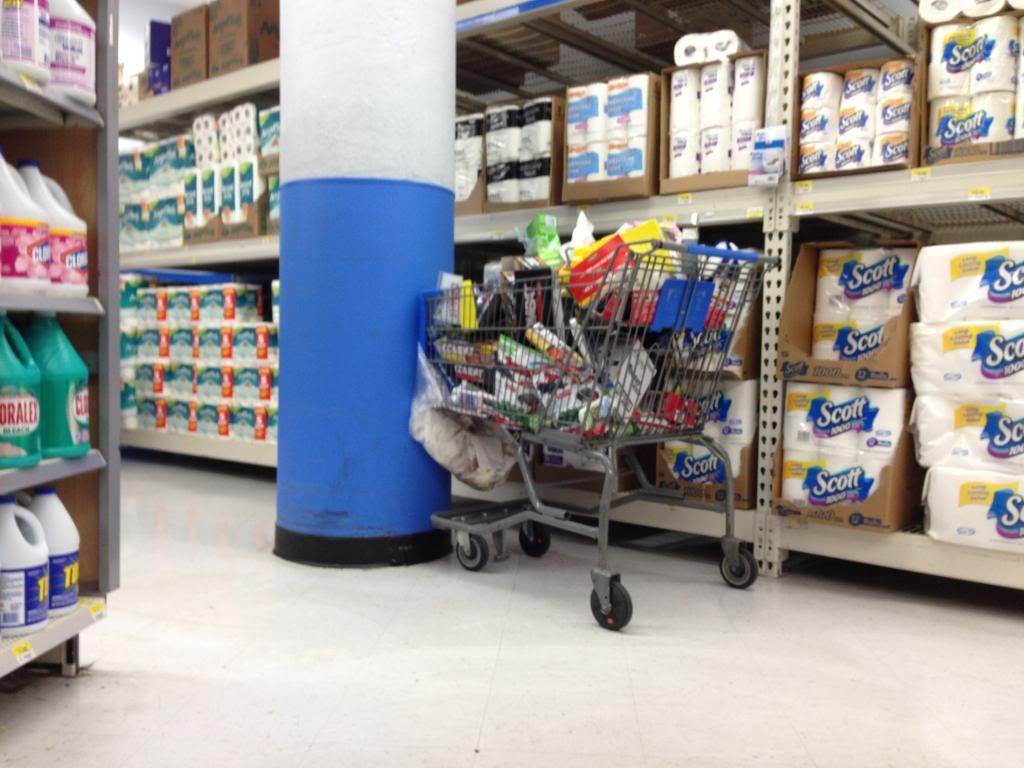 The folks who claimed "the store was just going through a reset" the first time I was there are wrong. Bottom line -- Walmart was, IMO, neglecting that store. For what reason I don't know. But whatever was going on was unacceptable and a slap in the face to the store's visitors as well as the community, not to mention the rest of the mall's tenants. I heard from several folks who live near this particular Walmart. One claims he's going to try to get the issue on the agenda at the local block club. Apparently, I'm not the only one who has noticed what, according to the response I received, might be a persistent problem. But it's nice to see that Walmart listens. At least to some extent. Even the Walmart "Battery Center" has morphed to fully stocked. Before
The folks who claimed "the store was just going through a reset" the first time I was there are wrong. Bottom line -- Walmart was, IMO, neglecting that store. For what reason I don't know. But whatever was going on was unacceptable and a slap in the face to the store's visitors as well as the community, not to mention the rest of the mall's tenants. I heard from several folks who live near this particular Walmart. One claims he's going to try to get the issue on the agenda at the local block club. Apparently, I'm not the only one who has noticed what, according to the response I received, might be a persistent problem. But it's nice to see that Walmart listens. At least to some extent. Even the Walmart "Battery Center" has morphed to fully stocked. Before  After
After 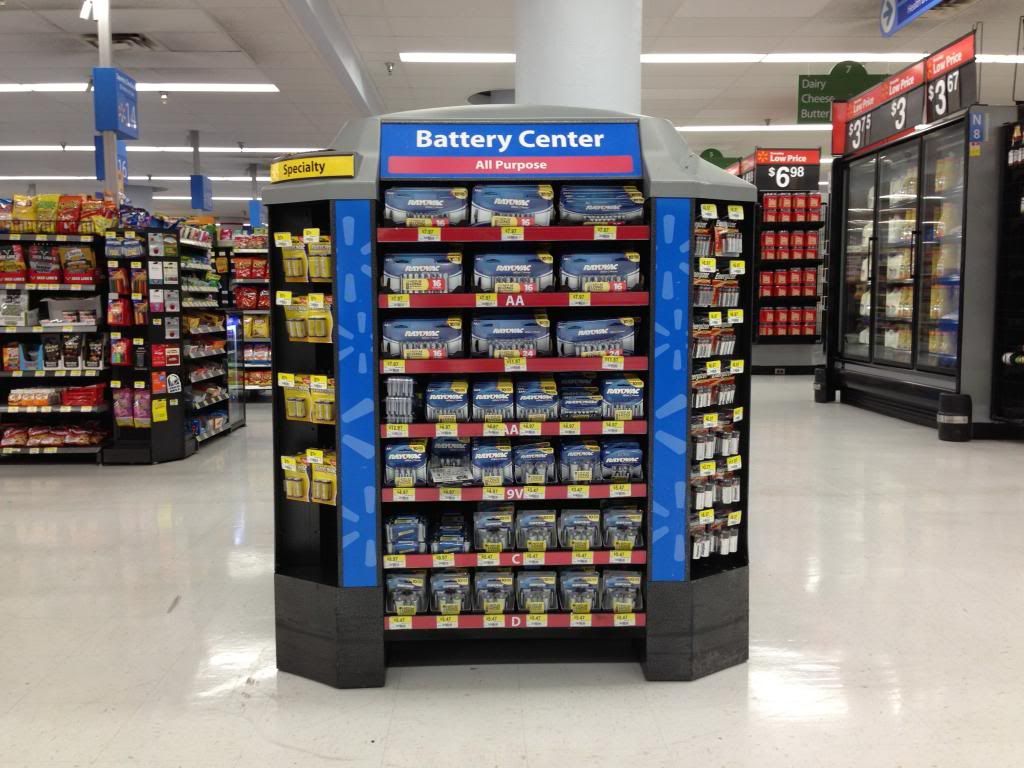 Follow @rocco_thestreet --Written by Rocco Pendola in Santa Monica, Calif.
Follow @rocco_thestreet --Written by Rocco Pendola in Santa Monica, Calif. Seattle City Council member Kshama Sawant wants more cities to adopt her hometown's new $15 minimum wage. SEATTLE (CNNMoney) Kshama Sawant has gone from Occupy Wall Street to occupying Seattle City Council.
Seattle City Council member Kshama Sawant wants more cities to adopt her hometown's new $15 minimum wage. SEATTLE (CNNMoney) Kshama Sawant has gone from Occupy Wall Street to occupying Seattle City Council.  New day in Seattle: $15 minimum wage
New day in Seattle: $15 minimum wage 
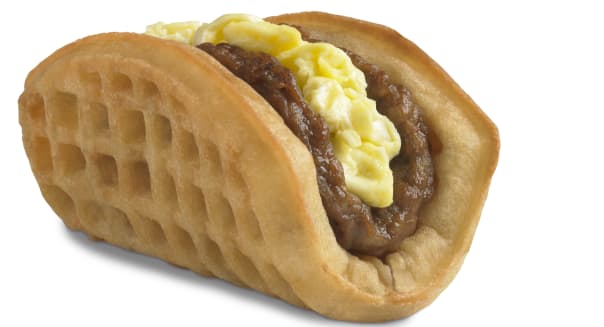 Taco Bell/AP There will be a new player in the escalating battle for breakfast on Thursday when Yum Brands' (YUM) Taco Bell rolls out its new morning menu, and the stakes are huge. McDonald's (MCD) is the name that most people associate with breakfast fast food. Ever since it introduced the Egg McMuffin in 1972, the world's largest burger flipper has set the bar for convenient morning meals for people on the go. The Waffle Taco will likely be Taco Bell's signature breakfast item. The taco-shaped waffle wrapped around a sausage patty, scrambled eggs and cheese turned heads when it was tested in select locations late last year. However, it's just one of the many items wooing commuters. Naturally there will be eggy breakfast burritos and grilled tacos with either bacon or sausage. The A.M. Crunchwrap gives a morning spin to the Crunchwrap Supreme by blanketing hash browns, scrambled eggs and either bacon or sausage in a pressed and folded flour tortilla. Tough Competition McDonald's is struggling these days, but it's still a fierce competitor when it comes to the first meal of the day. Just ask Burger King (BKW), which finds itself copying McDonald's more often than not, including hotcakes served with sausage and the Egg McMuffin. Just ask Wendy's (WEN), which retreated from its nationwide breakfast menu a couple of years ago. It's starting to work its way back in by introducing breakfast in some markets. Even Starbucks (SBUX) has been feeling the threat of McDonald's as the burger giant beefs up its McCafe line, offering guests drive-thru convenience that many Starbucks locations cannot. Earlier this month Starbucks ran a three-day promotion where it offered free coffee to anyone ordering a breakfast sandwich. It was meant to remind customers that it offers more than just java. Breakfast seems like an easy decision for a fast food leader. Who wouldn't want to milk more revenue out of a location by extending its operating hours? However, with Wendy's coming up short and even Chipotle Mexican Grill (CMG) dragging its feet, it's clearly not the no-brainer decision that it may seem on paper. Brand Identity at Risk A big risk in the move is squandering one's identity. There's a reason why cult burger faves -- including Five Guys and In-N-Out -- don't follow larger peers by offering full-blown breakfast items. The limited menus provide focus with consumers. Some have argued that the reason why comps at McDonald's have suffered later in the day recently is that it has strayed too far from its core burgers and fries. Taco Bell has also dramatically widened its choices, but it's been holding up better in terms of sustaining its popularity. Its same-restaurant sales increased 3 percent last year, and that's a welcome contrast to declines at many other quick-service concepts, including Yum Brands' own KFC and Pizza Hut. Adding items have hurt some chains, but Taco Bell's been scoring with its chef-inspired bowls and Doritos-dusted tacos. However, a lot of consumers already associate Taco Bell's traditional menu as either a late-night or early-morning meal. In 2007, its marketing department tried to introduce the "Fourthmeal," positioning its brand as a place for teens and young adults to grab a late-night meal beyond breakfast, lunch and dinner. The Waffle Taco and A.M. Crunchwrap will be incremental additions, but they ultimately won't move the needle in a material way.
Taco Bell/AP There will be a new player in the escalating battle for breakfast on Thursday when Yum Brands' (YUM) Taco Bell rolls out its new morning menu, and the stakes are huge. McDonald's (MCD) is the name that most people associate with breakfast fast food. Ever since it introduced the Egg McMuffin in 1972, the world's largest burger flipper has set the bar for convenient morning meals for people on the go. The Waffle Taco will likely be Taco Bell's signature breakfast item. The taco-shaped waffle wrapped around a sausage patty, scrambled eggs and cheese turned heads when it was tested in select locations late last year. However, it's just one of the many items wooing commuters. Naturally there will be eggy breakfast burritos and grilled tacos with either bacon or sausage. The A.M. Crunchwrap gives a morning spin to the Crunchwrap Supreme by blanketing hash browns, scrambled eggs and either bacon or sausage in a pressed and folded flour tortilla. Tough Competition McDonald's is struggling these days, but it's still a fierce competitor when it comes to the first meal of the day. Just ask Burger King (BKW), which finds itself copying McDonald's more often than not, including hotcakes served with sausage and the Egg McMuffin. Just ask Wendy's (WEN), which retreated from its nationwide breakfast menu a couple of years ago. It's starting to work its way back in by introducing breakfast in some markets. Even Starbucks (SBUX) has been feeling the threat of McDonald's as the burger giant beefs up its McCafe line, offering guests drive-thru convenience that many Starbucks locations cannot. Earlier this month Starbucks ran a three-day promotion where it offered free coffee to anyone ordering a breakfast sandwich. It was meant to remind customers that it offers more than just java. Breakfast seems like an easy decision for a fast food leader. Who wouldn't want to milk more revenue out of a location by extending its operating hours? However, with Wendy's coming up short and even Chipotle Mexican Grill (CMG) dragging its feet, it's clearly not the no-brainer decision that it may seem on paper. Brand Identity at Risk A big risk in the move is squandering one's identity. There's a reason why cult burger faves -- including Five Guys and In-N-Out -- don't follow larger peers by offering full-blown breakfast items. The limited menus provide focus with consumers. Some have argued that the reason why comps at McDonald's have suffered later in the day recently is that it has strayed too far from its core burgers and fries. Taco Bell has also dramatically widened its choices, but it's been holding up better in terms of sustaining its popularity. Its same-restaurant sales increased 3 percent last year, and that's a welcome contrast to declines at many other quick-service concepts, including Yum Brands' own KFC and Pizza Hut. Adding items have hurt some chains, but Taco Bell's been scoring with its chef-inspired bowls and Doritos-dusted tacos. However, a lot of consumers already associate Taco Bell's traditional menu as either a late-night or early-morning meal. In 2007, its marketing department tried to introduce the "Fourthmeal," positioning its brand as a place for teens and young adults to grab a late-night meal beyond breakfast, lunch and dinner. The Waffle Taco and A.M. Crunchwrap will be incremental additions, but they ultimately won't move the needle in a material way.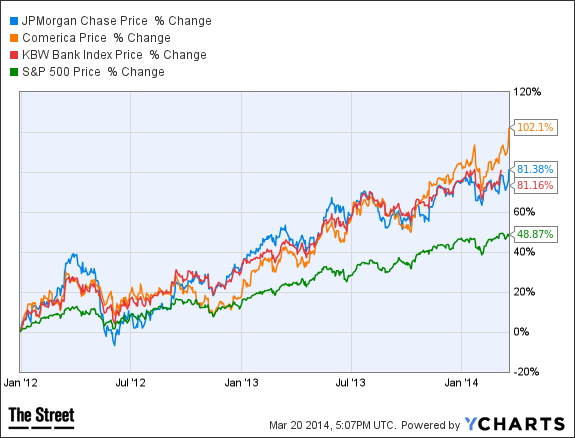 data by YCharts Follow @PhilipvanDoorn
data by YCharts Follow @PhilipvanDoorn Instead of offering the Amazon Fire Phone at a nominal $99, or even giving it away with an Amazon Prime subscription, the online retail giant is charging $199 for its 32-gigabyte model and $299 for its 64-GB model.
Instead of offering the Amazon Fire Phone at a nominal $99, or even giving it away with an Amazon Prime subscription, the online retail giant is charging $199 for its 32-gigabyte model and $299 for its 64-GB model. 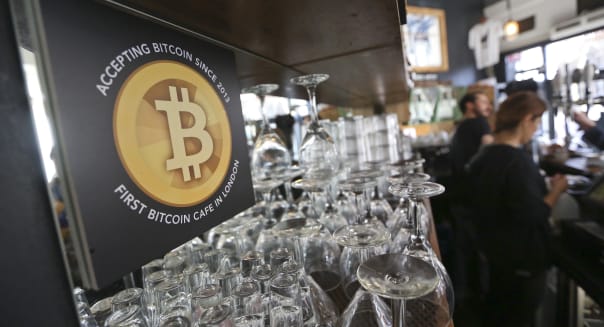 Chris Ratcliffe/Bloomberg via Getty ImagesA poster alerting customers that bitcoin is accepted as payment sits behind the counter inside the Old Shoreditch Station cafe in London. WILMINGTON, Del. -- Mt. Gox, once the world's largest bitcoin exchange, received U.S. bankruptcy protection on Monday to temporarily halt U.S. legal action against the Japanese company by traders who allege the operation was a fraud. Judge Harlin Hale in Dallas granted temporary bankruptcy protection to Mt. Gox, which had filed for bankruptcy protection in Japan in February. Attorneys for Mt. Gox said without bankruptcy protection the company would be irreparably harmed by a proposed class action in Chicago federal court and a breach of contract case in Seattle federal court. Mt. Gox filed for bankruptcy in Japan last month after it said it may have lost 750,000 of its customers' bitcoins as part of an attack by hackers. The plaintiff leading the Chicago lawsuit was scheduled Tuesday to ask a federal judge to freeze Mt. Gox's U.S.-based servers and other computer equipment and to set up a trust over Mt. Gox's assets. Mt. Gox's founder, Mark Karpeles, was scheduled to be deposed later this month in the Seattle lawsuit. The attorney leading the class action blasted the bankruptcy as a ruse. "This case involves a massive fraud," said Steven Woodrow, an attorney leading the class action, told Hale. "They claim incredibly that they will preserve assets and protect assets by entrusting the servers and other property to Mr. Karpeles. Respectfully, your honor, that is the definition of the fox guarding the henhouse." Mt. Gox said in papers filed with the Dallas court that the hacking attack was the subject of an intense investigation that indicated so far the bitcoins were lost as a result of a flaw in the software algorithm that underlies bitcoin, the digital currency. An attorney for Coinlab, which sued Mt. Gox in Seattle for breaching a contract last year, said her client was troubled by what appeared to be fraudulent behavior by Karpeles in the days leading up the U.S. bankruptcy filing. "We don't have proof yet but we do have concerns about the movement of hundreds of millions of dollars in bitcoins over the weekend, moved by Mr. Karpeles," said Jane Pearson, an attorney with Foster Pepper. Mt. Gox's attorney, David Parham, denied there was any fraud and said he believed Karpeles and Mt. Gox were complying with the Japanese bankruptcy proceeding. The Chapter 15 filing allows Mt. Gox to ask the U.S. Bankruptcy Court to recognize its foreign bankruptcy and to assist in the Japanese proceedings by protecting its U.S.-based assets. Hale's order protects Mt. Gox's U.S. assets until April, when the parties will return to court and Mt. Gox will seek a permanent stay of U.S. litigation. Hale said his order staying litigation did not apply to non-debtors, presumably Karpeles. Karpeles was named in a proposed class action filed in late February by Gregory Greene, an Illinois resident. The lawsuit proposes to represent all U.S. residents who paid a trading fee to Mt. Gox and those who had bitcoins or other currency with the exchange when it halted bitcoin withdrawals on Feb. 7. Greene is seeking to recoup millions of dollars lost when the mtgox.com website went down and prevented traders from selling as bitcoin prices plummeted. Mt. Gox is also defending a lawsuit in federal court in Seattle by CoinLab for breach of contract. CoinLab is seeking damages of $75 million from Mt. Gox. Mt Gox's tangled web of shell corporations brings turns the spotlight back to an issue U.S. law enforcement authorities have perennially raised with Congress. Several states, including Delaware, where Karpeles had at least two registered corporations, let foreigners register new corporations without ever setting foot in the United States, relying instead on agents to act as conduits for the companies' owners. The agents send along documents like lawsuits and other business communications addressed to the companies but keep no records themselves. They don't keep track of who the company's true beneficial owner may be. When investigators want to find out more about these companies' activities, the only information they can get from the agents is contact information for whatever overseas entity has been designated to receive correspondence about the company. Such is the structure of Mutum Sigillum, a company Karpeles registered in Delaware. He used it to interact with a U.S. bank through Dwolla, an online payment network. Real money passed through Mutum Sigillum (which means "worthless little symbol" in Latin) but it left almost no paper trail in the United States. It was registered in Delaware by Vincent Allard, a French Canadian lawyer who for the past 13 years has been living in Dover, Del., and, along with his daughter, running a business acting as a registered agent for Delaware corporations. Allard specializes in creating companies for people from Francophone countries, since he speaks French. When reached by phone on March 5, Allard said he hadn't heard of Mt. Gox's bankruptcy in Japan and would nevertheless have almost nothing to offer investigators if any were to come knocking. He was not in the office Monday and didn't immediately respond to a request by email for comment on the Texas filing. Representatives from the Federal Bureau of Investigation and other law enforcement agencies have been lobbying Congress for years to pass a bill that would prohibit states from allowing the incorporation of shell companies without better documentation and more oversight. The Incorporation Transparency and Law Enforcement Assistance Act, introduced in 2011 by Sen. Carl Levin, is before the Senate Judiciary Committee awaiting a markup. The bill would require states to record the identities of the beneficial owners of corporations they register and keep a corresponding driver's license or passport number, or a copy of a foreign passport on hand, ready to turn over to law enforcement officials if necessary.
Chris Ratcliffe/Bloomberg via Getty ImagesA poster alerting customers that bitcoin is accepted as payment sits behind the counter inside the Old Shoreditch Station cafe in London. WILMINGTON, Del. -- Mt. Gox, once the world's largest bitcoin exchange, received U.S. bankruptcy protection on Monday to temporarily halt U.S. legal action against the Japanese company by traders who allege the operation was a fraud. Judge Harlin Hale in Dallas granted temporary bankruptcy protection to Mt. Gox, which had filed for bankruptcy protection in Japan in February. Attorneys for Mt. Gox said without bankruptcy protection the company would be irreparably harmed by a proposed class action in Chicago federal court and a breach of contract case in Seattle federal court. Mt. Gox filed for bankruptcy in Japan last month after it said it may have lost 750,000 of its customers' bitcoins as part of an attack by hackers. The plaintiff leading the Chicago lawsuit was scheduled Tuesday to ask a federal judge to freeze Mt. Gox's U.S.-based servers and other computer equipment and to set up a trust over Mt. Gox's assets. Mt. Gox's founder, Mark Karpeles, was scheduled to be deposed later this month in the Seattle lawsuit. The attorney leading the class action blasted the bankruptcy as a ruse. "This case involves a massive fraud," said Steven Woodrow, an attorney leading the class action, told Hale. "They claim incredibly that they will preserve assets and protect assets by entrusting the servers and other property to Mr. Karpeles. Respectfully, your honor, that is the definition of the fox guarding the henhouse." Mt. Gox said in papers filed with the Dallas court that the hacking attack was the subject of an intense investigation that indicated so far the bitcoins were lost as a result of a flaw in the software algorithm that underlies bitcoin, the digital currency. An attorney for Coinlab, which sued Mt. Gox in Seattle for breaching a contract last year, said her client was troubled by what appeared to be fraudulent behavior by Karpeles in the days leading up the U.S. bankruptcy filing. "We don't have proof yet but we do have concerns about the movement of hundreds of millions of dollars in bitcoins over the weekend, moved by Mr. Karpeles," said Jane Pearson, an attorney with Foster Pepper. Mt. Gox's attorney, David Parham, denied there was any fraud and said he believed Karpeles and Mt. Gox were complying with the Japanese bankruptcy proceeding. The Chapter 15 filing allows Mt. Gox to ask the U.S. Bankruptcy Court to recognize its foreign bankruptcy and to assist in the Japanese proceedings by protecting its U.S.-based assets. Hale's order protects Mt. Gox's U.S. assets until April, when the parties will return to court and Mt. Gox will seek a permanent stay of U.S. litigation. Hale said his order staying litigation did not apply to non-debtors, presumably Karpeles. Karpeles was named in a proposed class action filed in late February by Gregory Greene, an Illinois resident. The lawsuit proposes to represent all U.S. residents who paid a trading fee to Mt. Gox and those who had bitcoins or other currency with the exchange when it halted bitcoin withdrawals on Feb. 7. Greene is seeking to recoup millions of dollars lost when the mtgox.com website went down and prevented traders from selling as bitcoin prices plummeted. Mt. Gox is also defending a lawsuit in federal court in Seattle by CoinLab for breach of contract. CoinLab is seeking damages of $75 million from Mt. Gox. Mt Gox's tangled web of shell corporations brings turns the spotlight back to an issue U.S. law enforcement authorities have perennially raised with Congress. Several states, including Delaware, where Karpeles had at least two registered corporations, let foreigners register new corporations without ever setting foot in the United States, relying instead on agents to act as conduits for the companies' owners. The agents send along documents like lawsuits and other business communications addressed to the companies but keep no records themselves. They don't keep track of who the company's true beneficial owner may be. When investigators want to find out more about these companies' activities, the only information they can get from the agents is contact information for whatever overseas entity has been designated to receive correspondence about the company. Such is the structure of Mutum Sigillum, a company Karpeles registered in Delaware. He used it to interact with a U.S. bank through Dwolla, an online payment network. Real money passed through Mutum Sigillum (which means "worthless little symbol" in Latin) but it left almost no paper trail in the United States. It was registered in Delaware by Vincent Allard, a French Canadian lawyer who for the past 13 years has been living in Dover, Del., and, along with his daughter, running a business acting as a registered agent for Delaware corporations. Allard specializes in creating companies for people from Francophone countries, since he speaks French. When reached by phone on March 5, Allard said he hadn't heard of Mt. Gox's bankruptcy in Japan and would nevertheless have almost nothing to offer investigators if any were to come knocking. He was not in the office Monday and didn't immediately respond to a request by email for comment on the Texas filing. Representatives from the Federal Bureau of Investigation and other law enforcement agencies have been lobbying Congress for years to pass a bill that would prohibit states from allowing the incorporation of shell companies without better documentation and more oversight. The Incorporation Transparency and Law Enforcement Assistance Act, introduced in 2011 by Sen. Carl Levin, is before the Senate Judiciary Committee awaiting a markup. The bill would require states to record the identities of the beneficial owners of corporations they register and keep a corresponding driver's license or passport number, or a copy of a foreign passport on hand, ready to turn over to law enforcement officials if necessary. Related CNL Market Wrap For June 19: Stocks Little Changed, Gold and Silver Higher Mid-Day Market Update: Kroger Surges On Upbeat Results; Pier 1 Shares Slide
Related CNL Market Wrap For June 19: Stocks Little Changed, Gold and Silver Higher Mid-Day Market Update: Kroger Surges On Upbeat Results; Pier 1 Shares Slide